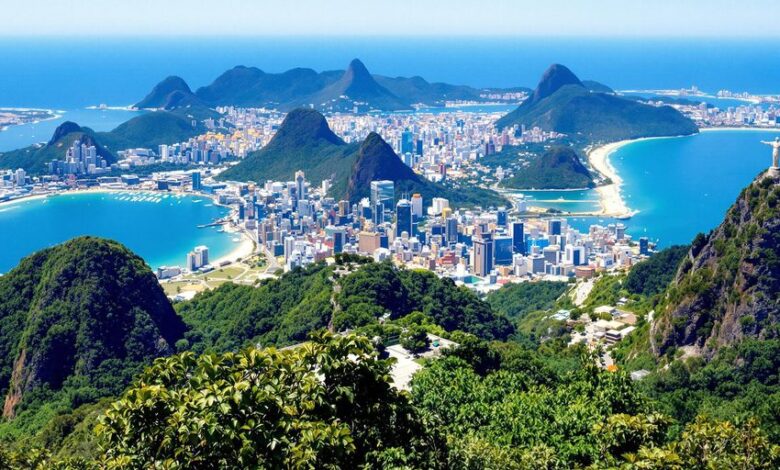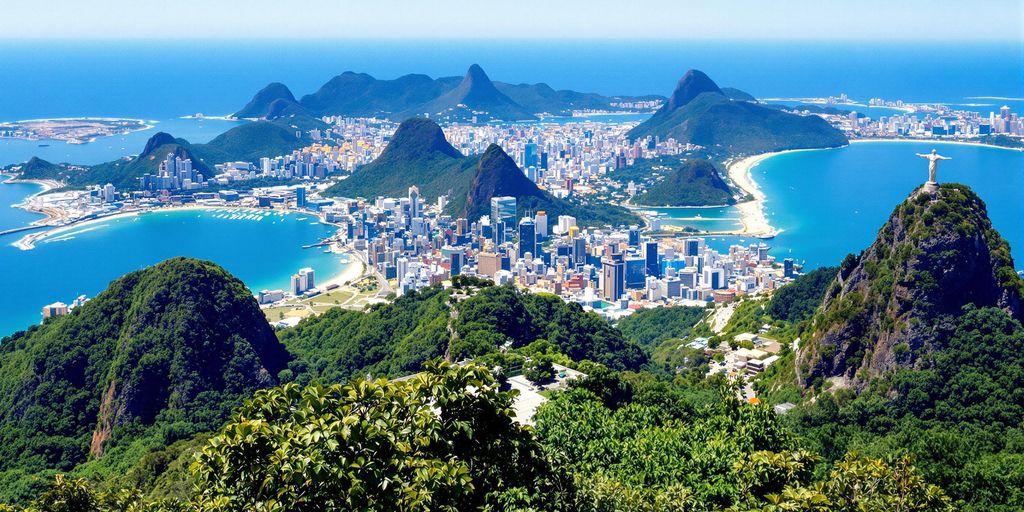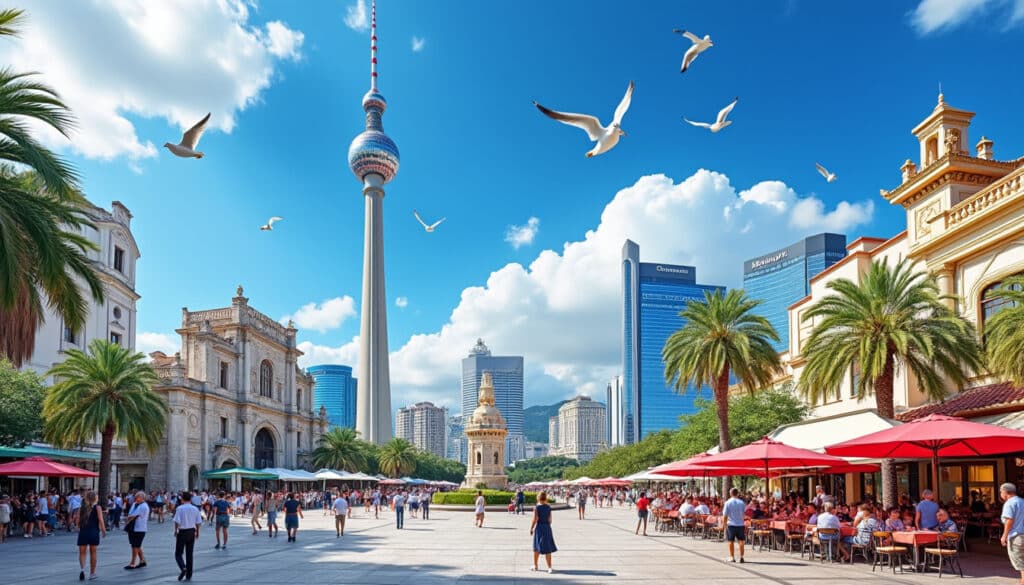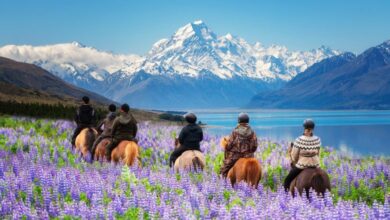

The global travel landscape is undergoing a quiet revolution as adventurous travelers increasingly bypass crowded tourist hubs in favor of undiscovered destinations that offer authenticity, sustainability, and unique experiences. This fundamental shift represents more than just changing preferences—it signals a transformation in how people conceptualize travel itself, moving from checklist tourism to meaningful exploration. As overcrowding plagues traditional hotspots and technology makes remote locations more accessible, previously overlooked destinations are experiencing unprecedented interest from travelers seeking deeper connections and more distinctive stories. This comprehensive analysis explores why offbeat destinations are gaining traction and examines the economic, environmental, and experiential implications of this emerging travel paradigm.
A. The Psychology Behind Offbeat Travel Popularity
Understanding why travelers are increasingly choosing unconventional destinations requires examining the psychological drivers behind this significant behavioral shift.
A. The Search for Authenticity: Modern travelers increasingly prioritize genuine experiences over curated tourist presentations.
-
Escaping Commercialized Tourism: Travelers are actively seeking destinations where cultural expressions haven’t been packaged for tourist consumption. Places like Albania’s Accursed Mountains, Colombia’s Guajira Peninsula, and Georgia’s Svaneti region attract visitors specifically because they offer cultural interactions that feel spontaneous and unrehearsed rather than performative.
-
The Prestige of Discovery: In an era where social media has made familiar destinations seem commonplace, there’s growing status associated with visiting places most people haven’t heard of. Being among the first to “discover” a destination provides social capital that visiting established hotspots no longer offers.
-
Meaningful Connection Seeking: Offbeat travel often facilitates deeper interactions with local people, as visitors in these destinations are still novel enough to spark genuine curiosity and hospitality. This creates opportunities for cross-cultural exchanges that are increasingly rare in heavily touristed areas.
B. Digital Burnout and Mental Restoration: The constant connectivity of modern life drives many travelers toward destinations that offer genuine disconnection.
-
Digital Detox Destinations: Locations with limited connectivity like Peru’s Choquequirao archaeological site, Mongolia’s Gobi Desert, and Finland’s Lakeland region appeal specifically to travelers seeking enforced digital disconnection. These destinations provide psychological restoration unavailable in constantly connected environments.
-
Crowd Avoidance Psychology: Research in environmental psychology demonstrates that overcrowding creates stress and reduces enjoyment. Travelers are increasingly aware that popular destinations during peak seasons may compromise their experience quality, driving them toward less crowded alternatives.
-
Slow Travel Mentality: The offbeat travel movement aligns perfectly with slow travel principles that emphasize deeper engagement with fewer places. This approach reduces transportation stress while allowing for more meaningful destination immersion.
C. The Evolution of Travel Identity: How people define themselves through travel has fundamentally changed.
-
From Tourist to Traveler Mindset: There’s growing distinction between being a “tourist” who visits established attractions and a “traveler” who seeks unique experiences. This identity shift drives demand for destinations that facilitate the latter self-perception.
-
Story Accumulation Versus Checklist Completion: Modern travelers increasingly value returning with unique stories rather than photos of familiar landmarks. Offbeat destinations provide richer narrative material than standardized tourist experiences.
-
Personal Growth Motivation: Challenging travel to unfamiliar destinations provides opportunities for developing resilience, adaptability, and problem-solving skills in ways that comfortable, predictable travel does not.
B. Economic Transformation Through Alternative Tourism
The rise of offbeat destinations creates new economic paradigms that differ significantly from traditional tourism models.
A. Distributed Economic Benefits: Tourism revenue spreads more widely when travelers visit emerging destinations.
-
Rural Economic Revitalization: Regions experiencing agricultural decline or industrial job losses are finding new economic opportunities through tourism. Examples include Romania’s Maramures region, where traditional crafts and farming communities now supplement incomes through authentic tourism experiences.
-
Secondary City Development: While capital cities often capture disproportionate tourism revenue, offbeat travel directs spending to secondary cities like Girona (Spain) instead of Barcelona, or Porto (Portugal) instead of Lisbon. This geographical distribution creates more equitable economic development.
-
Micro-Enterprise Opportunities: Offbeat tourism typically supports smaller businesses rather than international chains. Family-owned guesthouses, local guides, and community cooperatives capture more revenue than in traditional tourism models.
B. Sustainable Tourism Economics: The financial structure of offbeat tourism often aligns better with long-term sustainability.
-
Value Over Volume Models: Many emerging destinations consciously limit visitor numbers while increasing per-visitor value through premium experiences. Bhutan’s high-value, low-volume approach demonstrates how this model can generate significant revenue while minimizing environmental and cultural impact.
-
Community-Owned Tourism Initiatives: Destinations like Nepal’s Upper Mustang and Chile’s Rapa Nui have implemented community-controlled tourism where decisions and benefits remain local. These models ensure tourism development aligns with community values and needs.
-
Seasonal Extension Strategies: Offbeat destinations often succeed by attracting visitors during traditional shoulder seasons, creating more stable year-round employment. Iceland’s promotion of Northern Lights viewing beyond its summer peak exemplifies this successful strategy.
C. Infrastructure and Development Challenges: Building tourism in emerging destinations requires careful planning.
-
Appropriate Scale Development: The most successful offbeat destinations develop infrastructure that meets visitor needs without overwhelming local communities or environments. This balanced approach requires rejecting conventional mass tourism development models.
-
Digital Connectivity Balancing: Providing sufficient connectivity for practical traveler needs while preserving opportunities for digital disconnection represents an ongoing challenge for emerging destinations.
-
Transportation Access Innovation: Improving accessibility without triggering overtourism requires sophisticated management. Destinations like the Azores have successfully increased air access while implementing carrying capacity controls to prevent degradation.

C. Technology’s Role in Destination Discovery
Digital tools have dramatically reduced the barriers to discovering and accessing previously obscure destinations.
A. Social Media and Visual Discovery: Platforms that thrive on novelty have become powerful destination discovery tools.
-
Algorithm-Driven Serendipity: Instagram and TikTok algorithms that prioritize fresh content naturally surface less-familiar destinations. Places like Kazakhstan’s Kolsai Lakes, Oman’s Wadi Shab, and Bolivia’s Uyuni Salt Flats gained international attention primarily through social media exposure.
-
Micro-Influence Impact: While mega-influencers promote major destinations, micro-influencers with specialized followings often introduce audiences to emerging locations. Their perceived authenticity makes their recommendations particularly influential for experience-focused travelers.
-
Visual Search Technology: Platforms like Pinterest Lens and Google Lens allow users to identify locations from images, making previously hard-to-research destinations instantly accessible. This technology has dramatically reduced the information gap between established and emerging destinations.
B. Specialized Booking Platforms: Niche travel companies have emerged to serve the offbeat travel market.
-
Experience-Focused Marketplaces: Platforms like Withlocals and Showaround connect travelers directly with residents in emerging destinations, facilitating authentic experiences that bypass traditional tourism infrastructure.
-
Small-Group Tour Specialists: Companies like Intrepid Travel and G Adventures have developed extensive catalogs focusing on emerging destinations, reducing the planning burden for travelers while ensuring local economic benefits.
-
Peer-to-Peer Accommodation Networks: Airbnb and similar platforms have made accommodation available in destinations without hotel infrastructure, dramatically increasing accessibility to places that couldn’t previously support conventional tourism.
C. Travel Planning Resources: Comprehensive information has democratized access to complex destinations.
-
Crowdsourced Travel Intelligence: Platforms like Wikivoyage and specialized travel forums provide detailed, constantly updated information about destinations that receive minimal coverage in traditional guidebooks.
-
Digital Navigation Tools: Google Maps’ expanding coverage, offline functionality, and comprehensive public transportation data have made independent travel feasible in destinations where it was previously challenging.
-
Translation Technology: Real-time translation apps have reduced language barriers that once made travel to less-visited regions intimidating for many potential visitors.
D. Environmental Considerations in Offbeat Tourism
The environmental implications of tourism in emerging destinations require careful management to ensure sustainability.
A. Carrying Capacity Management: Preventing overtourism in fragile environments demands proactive strategies.
-
Visitor Number Controls: Destinations like Peru’s Rainbow Mountain and the Philippines’ Coron Island have implemented permit systems or visitor caps to prevent environmental degradation. These measures, while sometimes controversial, protect natural assets from being loved to death.
-
Dispersal Strategies: Rather than concentrating visitors in small areas, successful destinations develop multiple attraction points to spread environmental impact. This approach has been effectively implemented in places like Iceland’s Highlands and Canada’s Gros Morne National Park.
-
Seasonal Management: Managing visitor flows across seasons prevents peak-period overcrowding while maximizing economic benefits. Emerging destinations increasingly use differential pricing and targeted marketing to achieve more balanced visitation patterns.
B. Climate Change Resilience: Offbeat destinations often face particular vulnerability to climate impacts.
-
Community-Based Adaptation: Tourism revenue can fund climate adaptation measures in vulnerable regions. In Nepal’s Himalayan communities, tourism income supports infrastructure improvements that address melting permafrost and changing precipitation patterns.
-
Carbon Footprint Awareness: Travelers to offbeat destinations often show greater awareness of their environmental impact, creating opportunities for carbon-neutral travel initiatives. Destinations like Costa Rica’s Osa Peninsula have successfully marketed their carbon-negative tourism products.
-
Ecosystem Service Valuation: Tourism provides economic justification for preserving ecosystems that might otherwise be converted to other uses. Madagascar’s Andasibe-Mantadia National Park demonstrates how tourism revenue can fund conservation while providing local livelihoods.
C. Regenerative Tourism Models: The most forward-thinking emerging destinations aim to leave environments better than they found them.
-
Conservation-Focused Tourism: Destinations like Rwanda’s Volcanoes National Park and Guyana’s rainforest lodges direct tourism revenue directly toward conservation efforts, creating virtuous cycles where tourism protects the assets that attract visitors.
-
Rewilding Initiatives: Some European destinations, including Romania’s Carpathian Mountains and Spain’s Iberian Highlands, use tourism to fund landscape-scale restoration projects that revive ecosystems while creating visitor experiences.
-
Waste Management Innovation: Remote destinations often pioneer circular economy approaches out of necessity. The Faroe Islands’ comprehensive recycling systems and Bhutan’s zero-waste initiatives demonstrate how emerging destinations can become sustainability leaders.
E. Cultural Exchange and Community Impact
The relationship between visitors and local communities in offbeat destinations requires thoughtful management to ensure positive outcomes.
A. Cultural Preservation Through Tourism: When managed carefully, tourism can help sustain traditional cultures.
-
Economic Incentives for Cultural Continuity: When traditional practices like craft production, music, and ceremonies generate tourism income, younger generations have economic reasons to maintain these traditions. This dynamic has helped preserve cultural practices in places like Uzbekistan’s Silk Road cities and Guatemala’s Mayan communities.
-
Community-Controlled Cultural Presentation: The most successful cultural tourism occurs when communities control how their culture is presented to visitors. Initiatives like Nepal’s Thakali community homestays and Botswana’s San Bushmen experiences demonstrate how tourism can celebrate culture without commodifying it.
-
Intergenerational Knowledge Transfer: Tourism can create contexts where elders share knowledge with younger community members as part of visitor experiences. This process strengthens cultural transmission while providing economic benefits.
B. Managing Cultural Impact: Increased visitor numbers inevitably affect local cultures, requiring careful management.
-
Visitor Education Programs: Destinations like Bhutan and Papua New Guinea’s Sepik River region implement comprehensive visitor orientation that explains local customs and appropriate behavior, reducing cultural friction.
-
Cultural Carrying Capacity: Beyond environmental limits, destinations must consider how many visitors a culture can absorb without fundamental change. Some communities establish explicit visitor limits based on cultural rather than environmental factors.
-
Economic Leakage Prevention: Ensuring tourism revenue remains within local communities requires deliberate structures. Community tourism enterprises in places like Kenya’s Maasai Mara and Ecuador’s Amazon region demonstrate how local ownership keeps benefits within communities.

C. Authentic Cultural Exchange: The quality of cultural interactions differs significantly in offbeat versus mainstream destinations.
-
Mutual Curiosity and Learning: In emerging destinations where visitors remain novel, interactions often feature genuine curiosity on both sides rather than transactional relationships. This creates more meaningful cross-cultural understanding.
-
Appropriate Technology Use: Technology can enhance rather than diminish cultural exchange when used appropriately. Translation apps facilitate conversations, while photography, when consented to and shared respectfully, can document and celebrate cultural diversity.
-
Long-Term Relationship Building: Visitors to offbeat destinations often return repeatedly, developing ongoing relationships with communities. This continuity transforms tourism from a series of transactions into genuine intercultural friendships.
Conclusion: The Future of Offbeat Travel
The growing popularity of offbeat destinations represents more than a temporary trend—it signals a fundamental restructuring of global tourism toward more diverse, sustainable, and meaningful travel experiences. As technology continues to make the unfamiliar accessible and travelers increasingly seek authenticity over convenience, previously overlooked destinations will continue gaining market share at the expense of overcrowded traditional hotspots. The most successful emerging destinations will be those that balance accessibility with preservation, welcoming visitors while protecting the very qualities that make them distinctive. For travelers, the shift toward offbeat destinations offers unprecedented opportunities for discovery, connection, and personal growth. For destinations, it represents both economic opportunity and profound responsibility to develop tourism thoughtfully. The future of travel is distributed, diverse, and deeply rewarding for those willing to venture beyond the familiar.
Tags: offbeat travel, hidden gems, alternative destinations, sustainable tourism, authentic travel, undiscovered places, responsible tourism, travel trends, unique destinations, cultural tourism, adventure travel, emerging destinations




